Spanish Mastiff: what kind of dog is it and how to properly care for it?
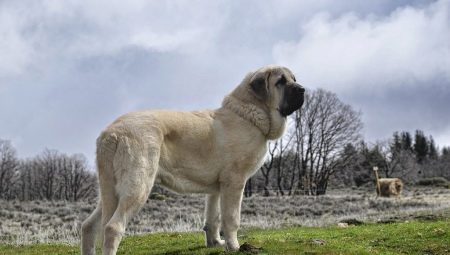
Some 15-20 years ago, very little was known about the Spanish Mastiff, but today this dog is known as an ideal guard, watchdog and friendly pet. Despite their impressive size, mastiffs are considered good nannies - they will never attack a creature that is smaller and weaker than them.
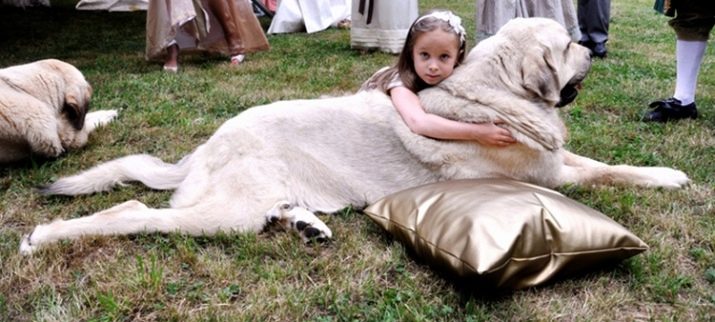
Origin story
There are several versions explaining the origin of these giant dogs. Among the most reliable, two are distinguished. According to one of them, the Spanish mastiffs were brought to the countries of the Old World by Phoenician merchants by sea, according to the other, they were brought by Asian nomads traveling by land.
Previously, it was believed that the mastiffs originally belonged to Roman soldiers., but this version was not confirmed, since by the time they landed near the coast of Spain, the local population already had large dogs, by the way, it was they who helped the aborigines to defend their territory. Considering that the Spanish, Tibetan, Balkan, as well as Turkish and Caucasian mastiffs have many external similarities, it is now not possible to determine which breed was the ancestor of the branch. It is only known that all these types of dogs have common roots.
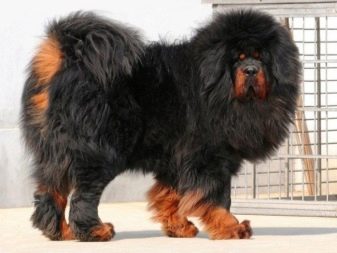
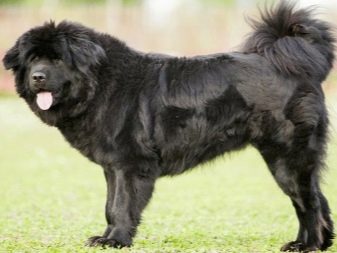
It is safe to say that mastiffs appeared in people at a time when they needed a good guard and protector of livestock from wild animals- an animal that will be distinguished by its large size, endurance and swiftness, which will be able to sense danger from afar and take decisive measures to protect its owner and his property.It is reliably known that the Spanish mastiffs existed already in the 15th century - at that time they guarded the pastures in the Pyrenees. As a rule, there were several dogs per herd - they not only protected the rams and cows from the attacks of predators, but also did not allow their "wards" to scatter.
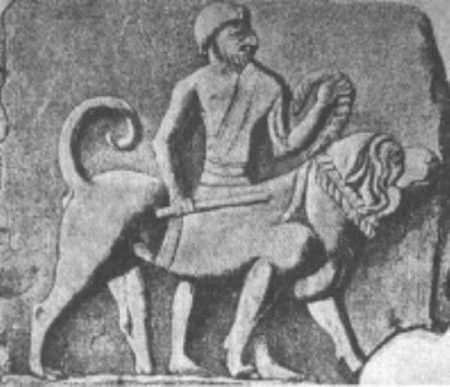
Despite the fact that these animals have served man for several centuries, they began to speak publicly about the representatives of this large breed only at the beginning of the 20th century. After the Second World War, the standard of this breed was spelled out, and after the mastiffs gained international fame, the popularity of dogs increased significantly, however, the level of German shepherds and Rottweilers did not catch up.
In Russia, mastiffs became widespread in the mid-90s, they were brought from the Czech nursery, and after a while the very first puppies of dogs of this amazing breed were born in our country. However, in our country and in other countries of the former USSR, Spanish mastiffs are quite rare, although there is no question of their complete disappearance - a couple of dogs necessarily participate in any international exhibition from these countries.
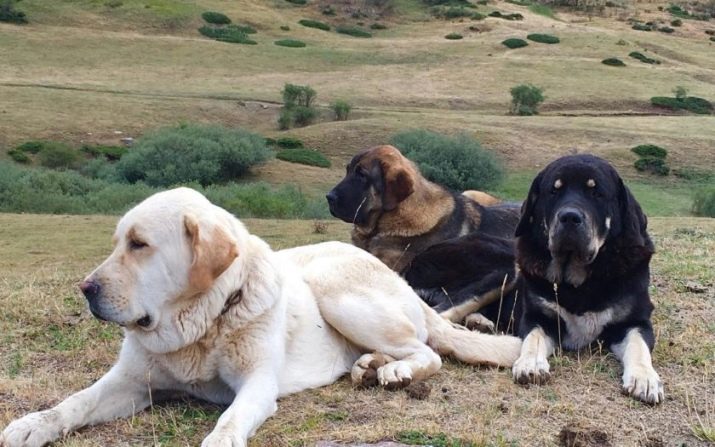
Nowadays, of course, no one gives birth to mastiffs for their original purpose anymore. - grazing, but these dogs managed to prove themselves in a new role. Today it is a loyal friend and reliable companion. High security characteristics allow the dog to be used as a watchdog - it will faithfully protect its owner and his property.
And, of course, this is a very status animal, which, better than any words, will indicate the financial position and place of its breeder in the social hierarchy - these are expensive dogs, therefore not everyone can afford a mastiff.

Description
The homeland of the Spanish Mastiff, as the name of the breed suggests, is Spain. Most often these are kind and courageous animals, since weak and cowardly individuals are usually not used for breeding. The Spanish Mastiff is a large, strong, but extremely affectionate animal. Such a dog looks quite frightening.
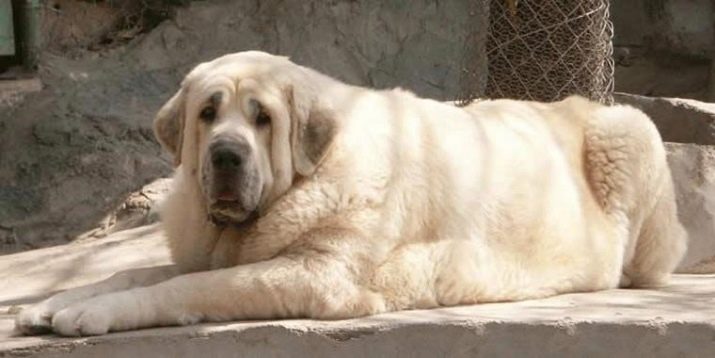
Breed standards are very clear and any deviation from them is considered a defective trait.
- The growth of an adult male at the withers starts from 77 cm, in bitches - from 72 cm, body weight varies from 50 to 60 kg.
- The head is rather large, the forehead is usually flat, the skull is square-shaped. The muzzle is elongated.
- The nose is black, the nostrils are dilated.
- The eyes are small, the iris is brown or hazel. The eyelids are sunken, drooping. A characteristic feature of the mastiff is his gaze - calm and balanced.
- The ears are relatively small, triangular, drooping.
- The neck is set high, with a nice curve, very muscular.
- The body is massive and well developed. The circumference of the sternum is usually greater than the height of the animal at the withers. In this case, the belly is tucked up.
- Paws are angular. These dogs have a soft, majestic gait, which only complements the image of a noble animal.
- The coat of the Spanish Mastiff is of medium length, the undercoat is also coarse. The hairs on the tail, shoulders and sternum are slightly longer.
- As for the color, the representatives of the breed can be absolutely any color - most often there are animals of a yellowish hue, fawn, black, two-colored: brindle or white with black are also common.
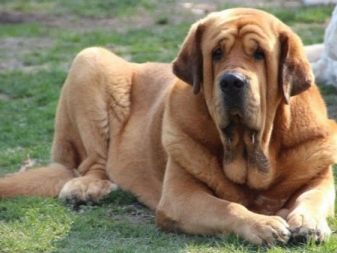

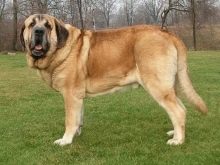
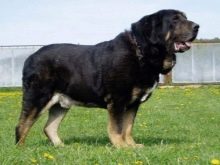
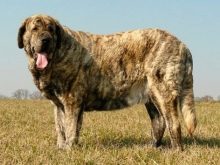
The character of the animal matches its appearance: these are reliable and docile dogs, they always stand up for the protection of weak and small creatures. This animal never attacks first and always warns of an attack by barking or roaring.
One of the main features of Spanish mastiffs is considered to be exceptional loyalty: they serve their master with faith and truth, especially if they constantly feel warmth and affection from him.
The docile nature makes it pretty easy to raise a good dog., this animal gets along well with other pets, including cats.Such a mastiff can be left with babies - families in which such dogs live speak of them as excellent nannies who take good care of children and stoically endure all their petty pranks.
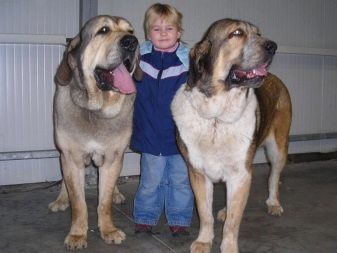
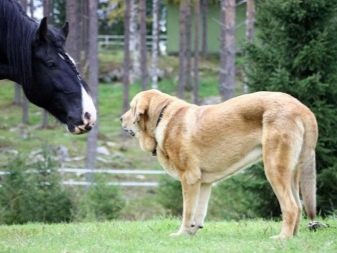
Feeding
In order for the mastiff to fully grow and develop correctly, it needs a balanced diet, enriched with all vitamins, micro- and macroelements important for the dog's health. The difficulty of feeding a mastiff is due to the fact that dogs of this breed have a predisposition to obesity, but if the food is too scarce, problems with the musculoskeletal system and a general deterioration of the dog's condition are not excluded.
Veterinarians do not recommend keeping the animal on a mixed food system - if you feed your mastiff with dry food, then you should not give him natural products, and if you prefer meat, then you do not need to include store food in the diet.
Ready-made feeds have one significant advantage - they have a balanced composition, which includes all the necessary vitamin and mineral complexes, in addition, the feed does not need to be prepared, and calculating the required portion is no problem.
If you give your dog a natural, then you need to take into account several factors at once: the dog's body weight, age, physical activity and degree of activity. The required dose is calculated based on the following ratio: 30-40 g of protein for each kilogram of animal weight. It is best to offer your pet beef, veal and lamb. From time to time, you can replace them with chicken or turkey, but you should not completely transfer the dog to poultry meat.
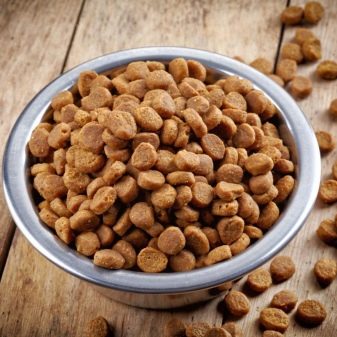
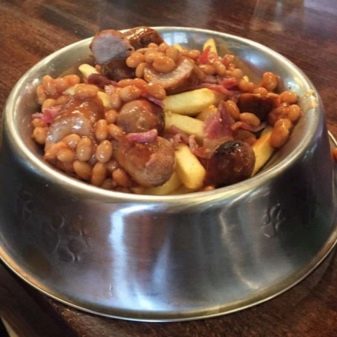
A couple of times a week, you can give the mastiff offal - it is better to give preference to the liver or heart. Another 30% should come from cereals, vegetables and fruits. Additionally, the diet should include vitamin and mineral complexes, as well as vegetable fat and Omega-3 or 6. Once a week, low-fat cottage cheese is allowed, if possible, dilute the dog's mash with chopped herbs or sprouted grains.
Adult animals should receive food twice a day, small puppies eat 4-5 times, with an interval of five hours. Starting from six months of age, the number of feedings is gradually reduced, while the dose itself is increased.
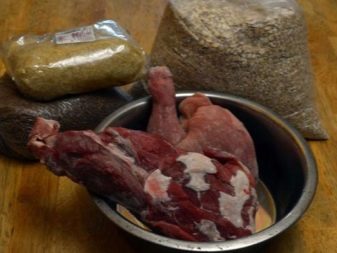
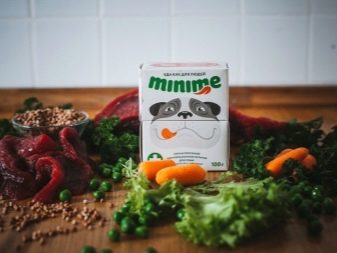
Care
The Spanish Mastiff naturally prefers free spaces, so it is best to start a dog for life in a spacious house with a large garden area, where the dog can walk without any restrictions.
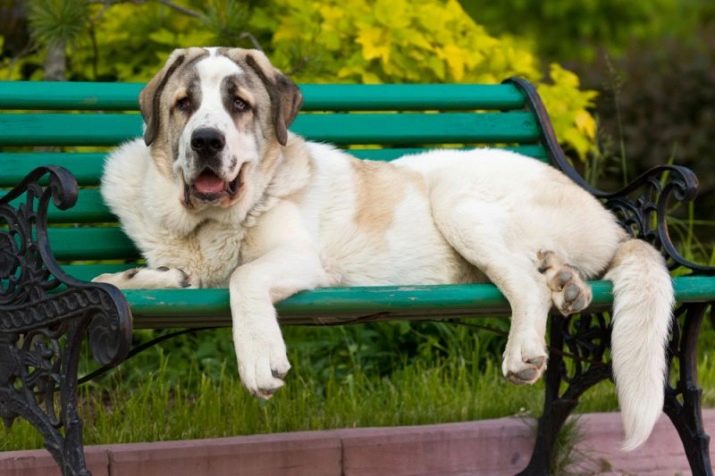
It is important to properly care for the mastiff's coat - the fact is that it is quite thick, and the undercoat is just as thick. In order to remove all dead hairs, the animal needs to be brushed regularly, for this use special brushes. The mastiff is rarely bathed - 3-4 procedures per year are enough; to clean the coat, you must use special shampoos for dogs.
Ear hygiene is reduced to a simple cleaning of the inner surface with a cotton swab dipped in a special veterinary lotion. The eyes must be treated once a week with a weak solution of furacilin or a decoction of chamomile.
Spanish mastiffs need frequent walks, we can say that they need them like air. It is important that each walk lasts at least an hour, and it is desirable that the mastiff has the opportunity to run and frolic. If the animal lacks physical activity, this leads to a decrease in appetite or, conversely, obesity, viciousness and aggressiveness of the pet.
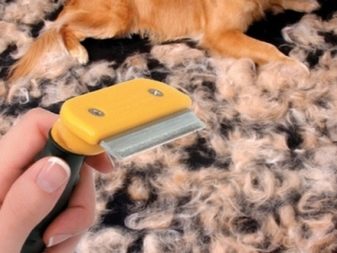
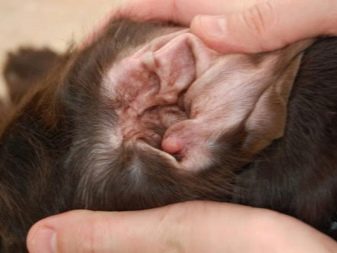
Processing the claws does not present any problem for the mastiff - usually the pet grinds them off on its own, but if this does not happen, then you just need to cut them off with a nail clipper. This procedure should be carried out from the earliest age of the mastiff - no later than two months.
It is better to clean the teeth of dogs of this breed on their own, with a special brush or with a cotton pad., and it is desirable to start such manipulations from childhood.If possible, purchase bones from your veterinary pharmacy, which help to remove plaque, and, in addition, have the most beneficial effect on the functioning of the digestive tract.
Dogs of this breed live for 10-12 years, while animals start growing up relatively late. So, the female is considered fully formed in the second or third year of life, and the male is considered sexually mature in the third, and even the fourth.
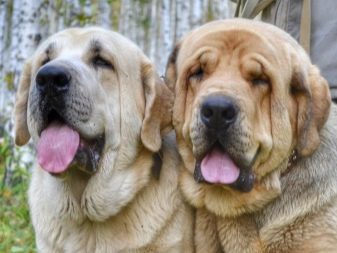
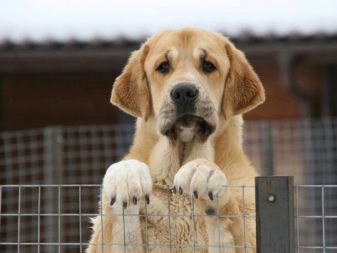
Dogs of this breed naturally have strong immunity, so there are not so many diseases typical for the mastiff. Most often, animals are faced with pathologies such as:
- congenital dislocation of the hip joint;
- eczema;
- inflammation of the joints;
- volvulus of the stomach.
With timely initiation of therapy, all these diseases are easily treatable, while delay in some cases can lead to a serious deterioration in the condition of the animal, and even cause the death of the pet.

Education and training
Spanish Mastiffs are usually easy to train, and animal rearing should be started from an early age.
You need to train every day up to 3.5-4 years of a pet's life, that is, until the moment when the dog is already fully mature in psychological and physiological terms.
Mastiffs are very smart, so there are usually no problems with training, but it is still recommended to consult with professional dog handlers before starting classes.
During the lesson, you need to let the dog understand which of you is in charge., commands should be given distinctly and clearly, and disobedience should be scolded in a confident, firm voice. At the same time, you can not break off to scream and beat the pet - this animal does not tolerate physical punishment. You need to start training with three minutes a day, gradually increasing the number and duration of exercises.
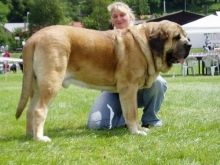
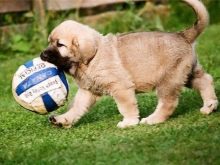
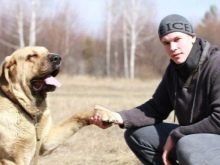
Breeding
Usually, exclusively healthy representatives of the breed without burdened heredity are used for breeding Spanish Mastiffs. Aggressive and nervous animals pose a serious danger to those around them, therefore they are considered unsuitable for breeding.
The breeding of Spanish mastiffs is carried out in specialized nurseries, some are also available in our country. The breeding of dogs is supervised by professionals, so the purity of the breed of animals offered by certified breeders should usually not be questioned.

It should be noted that these large dogs are not cheap pleasure. Depending on the class of the young dog, the cost of the pet also varies.
- Pet-class animals. These include healthy dogs with defective breed characteristics, usually they are turned on for the soul, such pets are not allowed to participate in competitions and exhibitions. The cost of a dog is 30-40 thousand rubles.
- Breed class. These puppies are suitable for breeding, but they have no prospects for a show career. The price of dogs is 50-70 thousand rubles.
- Show class. These are the best representatives of the Spanish mastiffs, future champions, capable of becoming worthy successors of the breed. Their cost reaches 150 thousand rubles.
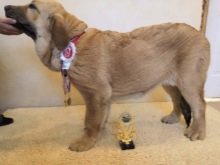

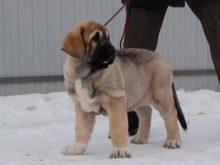
You can often find ads in which Spanish Mastiff puppies are offered for 10-20 thousand, but, most likely, for that kind of money they will sell you a dog with mental or physical disabilities. Communication with such animals is unsafe for the owner and his family members.
Not a single conscientious breeder will sell a puppy whose age does not reach 2-3 months, since it is this time that the baby needs in order to receive all the necessary knowledge from the mother and learn how to communicate competently with his own kind. If you take the animal from the mother ahead of time, then its psyche will be damaged.
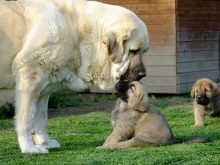
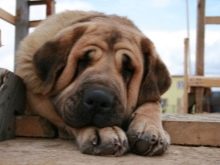
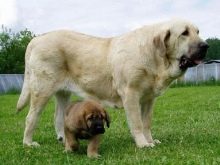
Interesting Facts
The Spanish Mastiff is considered the largest dog in the world. For a long time they were used as shepherds, while not only guarding the herd, but also driving it.They are also the most ancient dogs, and they are much older than herding breeds.
In those days when the living conditions of the mastiffs were rather harsh, only four puppies were usually left in the litter., while others were simply destroyed - in those years it was believed that a bitch could only feed such a number of animals.
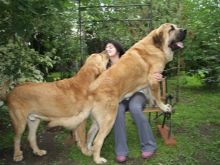
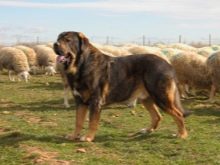
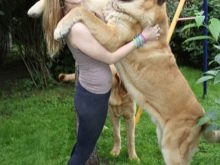
Reviews
There are no ideal animals, so each breed has both positive and negative reviews.
Among the advantages of the Spanish Mastiff, the owners highlight the following:
- the dog is an ideal guard;
- the animal is friendly, it can be an ideal nanny for small children;
- the Spanish Mastiff is devoted to his master and his family members;
- the dog is not particularly talkative.
However, there is also a drawback - with improper upbringing and lack of training, the animal often becomes a source of danger to humans.
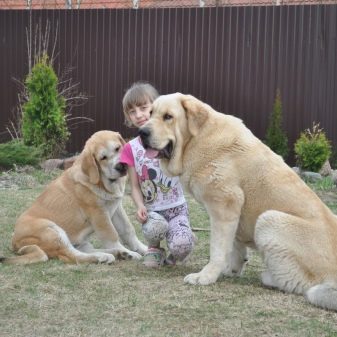

You can get to know the Spanish Mastiff better in the following video.






































